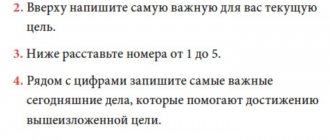Broken windows theory is the brainchild of sociologist George Kelling and political scientist James Quinn Wilson. Thanks to this theory, one of the largest metropolises in the world, New York, in just a few years, transformed from a crime-prone city, in which over 1,500 crimes and about a dozen murders were committed daily, into the most prosperous and safe city in the United States.
The successful application of this theory gave impetus to its use by other countries in the fight against crime. As the broken windows theory became popular, dramatic changes occurred not only in the criminal world. This concept has been successfully used in business.
The broken windows theory - what is it in simple words
This concept received such a “speaking name” because of the phenomenon of a directly proportional relationship between crime and order. If one day you observe one broken window in a house, after a short period of time all the windows in it will be broken. A single violation of integrity and order creates the impression of complete anarchy and impunity.
Simply put, the broken windows theory is a theory that states that the sight of any kind of disorder causes base impulses in people to behave uncivilly: throwing garbage where there is already litter, running a red light because others are doing it, breaking up something what’s broken, shit where it’s already been shit, etc. Such minor offenses cause a chain reaction of larger violations. Impunity for small things gives a signal for more serious crimes.
Returning to New York in the 70s and 80s of the last century, this city was a dangerous and dirty metropolis, where passers-by were robbed in broad daylight, and at night only a madman could go out onto the street. A dirty subway, walls and carriages painted with vulgar pictures and inscriptions; trash and broken bottles lying everywhere; drunks on the streets and beggars brazenly pestering passers-by; bandits who openly take money and valuables from passengers in transport; prostitutes and pimps in Times Square - that's what New York was then.
If you constantly live in an atmosphere of chaos and anarchy, this psychologically prepares a person for illegal actions. When Rudolph Giuliani became mayor of the city in the early 90s, the situation gradually began to change. He began to actively use the broken windows theory, which, in his opinion, was easy to apply and effective.
By persistently, step by step, fighting minor violations of order and the law, Giuliani and his appointed police chief, William Bratton, were able to transform New York into a comfortable and safe city.
Scientific evidence for the broken windows theory
For several years, despite positive changes in the criminal world in many countries where the broken windows theory was introduced, it was still perceived as a hypothesis. Not everyone believed that the troublemakers provoked “respectable” citizens to commit illegal actions. It has been argued that dirt on the streets and in public places is a consequence of high crime rates, not its cause.
Dutch social scientists decided to conduct several experiments to finally determine the role of the broken windows theory.
Experiment with bicycles
For the first experiment, we chose a bicycle parking lot, which was initially well maintained and had a poster on the wall asking people not to paint the walls. Advertising brochures for a fictitious sports store were attached to the bicycles and all bins were removed. When the owner approached his bicycle, he had three options for the development of events:
- Take the advertising brochure with you to throw it away where there is a trash bin.
- Throw the prospectus directly onto the asphalt.
- Place it on the next bike.
2/3 (52 out of 77) of cyclists did not violate public order by taking the avenue with them. The rest either threw it on the ground or re-taped it.
Then the experiment was repeated: again they pasted brochures on the bicycles, removed the trash cans and made only one change - they painted the wall near the parked bicycles with meaningless drawings. This disruption changed the behavior of cyclists and provoked their desire to get rid of avenues more radically: out of 77 subjects, 53 threw them directly onto the asphalt.
Trolley experiment
A sign was installed in the underground parking lot of a grocery supermarket asking people to return carts to the store. Advertising leaflets were placed under car windshield wipers. When there were no abandoned carts in the parking lot, only 1/3 of visitors threw flyers onto the ground. When they deliberately left 4 carts abandoned in the parking lot, 58% of shoppers left leaflets behind on the pavement.
Violation of order in one thing gives impetus to violations in another - this is the psychology of the majority. “If someone breaks the rules, why shouldn’t I break them too?”
Experiment with sound
Sociologists made an interesting conclusion when testing the broken windows theory with sound effects. In the Netherlands, it is legally prohibited to use pyrotechnics (fireworks, firecrackers) on New Year's Eve. Violators will face a hefty fine. The experiment showed that those residents who heard the sounds of firecrackers exploding (disruption of order) threw leaflets on the ground much more often than those who did not hear these sound effects.
Experiment with 5 euros
An envelope was placed in the mailbox, through which a five euro bill was clearly visible. In the first case, the mailbox was clean and tidy, as was the area around it. In the second case, the box was deliberately painted with meaningless pictures. In the third case, they littered around.
As a result, in the first case, 13% of passers-by pocketed the envelope with the banknote. In the second experiment, 27% of people took the envelope. In the case of scattered trash, 25% of people stole the envelope.
This led to the conclusion that in the absence of order, people create even more disorder.
"Death Island"
Arkady Shaikhet/MAMM/MDF/russiainphoto.ru
The sad story of one of the first batches of these forced special settlers, known as the Nazi tragedy, has become widely known.
More than six thousand people were disembarked in May 1933 from barges on a small deserted island on the Ob River near the village of Nazino in Siberia. It was supposed to become their temporary refuge while issues with their new permanent place of residence in special settlements were being resolved, since they were not ready to accept such a large number of repressed people.
People were dressed exactly the same as the police detained them in the streets of Moscow and Leningrad (St. Petersburg). They had neither bedding nor any tools to build a temporary home for themselves.
State Historical Museum of the Southern Urals/russiainphoto.ru
On the second day the wind rose, and then frost struck, which soon gave way to rain. Defenseless against the vagaries of nature, the repressed could only sit in front of fires or wander around the island in search of bark and moss - no one took care of food for them. Only on the fourth day did they receive rye flour, which was distributed at a rate of several hundred grams per person. Having received these crumbs, people ran to the river, where they diluted flour in hats, footcloths, jackets and pants in order to quickly eat this kind of porridge.
The number of deaths among special settlers quickly grew into the hundreds. Hungry and cold, they either fell asleep right next to the fires and burned alive, or died from exhaustion. The number of victims also increased due to the cruelty of some guards, who beat people with rifle butts. It was impossible to escape from the “island of death” - it was surrounded by machine gun crews, who immediately shot those who tried.
How Broken Windows Theory Impacts Business
Someone will think: what does the broken windows theory have to do with business, since it concerns the criminal world? In fact, this theory can be seen in the business world as well.
You have entered a restaurant that positions itself as a popular and elite establishment with exquisite dishes, a famous chef and always fresh food. What would you think if you saw a waitress in wrinkled clothes, a badly washed plate, or a dirty restroom? This is unlikely to give you any confidence in the food served here. And, it is likely that doubts will arise about the sincere care for visitors on the part of the owner and staff. Although, it would seem, what does a wrinkled uniform have to do with Greek salad? But such a mess in the little things will cause certain logical conclusions and a decline in image in the eyes of clients. This cannot but have a detrimental effect on business.
- Dirt and disorder in the office, impolite employees, a poorly written menu, a dusty counter, peeling paint - these little things create a certain impression on potential clients and partners. And all these are broken windows.
- If you are greeted in a Japanese restaurant by a blond guy with wide blue eyes, this is a broken window.
- If you cannot return a purchased and unopened item to the store, it is a broken window.
The broken windows theory can also be observed in working with personnel. If a manager turns a blind eye to an employee’s tardiness or inappropriate appearance, after a short time the rest of the employees will begin to behave the same way:
- be late for work,
- during working hours, deal with personal issues or do nothing at all,
- take endless smoke breaks,
- come in unkempt clothes or with a rumpled appearance.
You can’t count on productive work in such a team. If your business has an online presence, it is important to keep track of all the reviews your company receives. By ignoring a negative review from a dissatisfied client, you expose your business to great risk: very quickly, similar ones will appear under one negative message. Unflattering reviews will overwhelm your company, creating a bad reputation for it, which will then be quite difficult to restore.
"Island of Cannibals"
The first cases of cannibalism on Nazinsky Island occurred already on the tenth day of the repressed people’s stay there. The criminals who were among them crossed the line. Accustomed to surviving in harsh conditions, they formed gangs that terrorized others.
State Historical Museum of the Southern Urals/russiainphoto.ru
Residents of a nearby village became unwitting witnesses to the nightmare happening on the island. One peasant woman, who was only thirteen years old at that time, ]]>remembered]]> how one beautiful young girl was courted by one of the guards: “When he left, the people grabbed the girl, tied her to a tree and stabbed her to death, eating everything they could . They were hungry and wanted to eat. All over the island one could see human flesh being torn, cut and hung on trees. The clearings were littered with corpses."
“I chose those who were no longer alive, but not yet dead,” ]]>showed ]]>later during interrogations, a certain Uglov, accused of cannibalism: “It’s clear that it comes, in a day or two it will still give oak.” . So it will be easier for him to die... Now, right away, he won’t suffer for another two or three days.”
Another resident of the village of Nazino, Feofila Bylina ]]>remembered]]>: “Those who were deported came to our apartment. Once, an old woman from Death Island also visited us. She was being transported in a convoy... I saw that the old woman’s calves were cut off on her legs. To my question she answered: “They cut this for me on Death Island and fried it.” All the flesh on the calves was cut off. This made her feet freeze, and the woman wrapped them in rags. She moved independently. She looked like an old woman, but in reality she was in her 40s.”
Alexander Rodchenko/MAMM/MDF/russiainphoto.ru
A month later, hungry, sick and exhausted people, surviving on rare, tiny food rations, were evacuated from the island. However, the disasters did not end there for them. They continued to die in the unprepared, cold and damp barracks of Siberian special settlements, receiving meager food there. In total, during the entire long journey, out of six thousand people, just over two thousand remained alive.
How to prevent broken windows
When “broken windows” appear in a business, significant efforts must be made to “repair” them. It is better to regularly monitor the process and, noticing emerging “cracks,” stop the possibility of broken windows.
- For a business in the service sector, polite, attentive attitude towards customers should come first.
- Check whether you are making promises that you cannot keep. Will customers get what they expect? Is it possible to give them more than they expect without making your business unprofitable?
- Encourage employees to be better than other companies. Ask questions about the motivation of your employees. Are they interested in surprising customers with their level of service? Do they strive to give customers more than they bargain for?
- Use the mystery shopping method to help you understand what challenges your customers face. Anonymously visit one of the retail outlets, leave a complaint or make a call from an indignant customer and observe how your employees react to them.
Always strive to stand out from your competitors. You must have all the best that your competitors have, and a little more, so that customers do not have the thought of leaving you for someone else.
Attempts at refutation
It is important to note that such practically oriented experiments are largely flawed when viewed from a scientific point of view. Most studies of the phenomenon under consideration have highlighted the analysis of correlations, and such data can be viewed from different perspectives. Correlation does not reveal the essence and content of cause-and-effect relationships between the phenomena being studied. Therefore, the presented theory was questioned by representatives of the scientific community. The issue that deserves special attention is the challenge of the fact that people’s violation of certain rules can provoke other people to commit similar acts.
To resolve all controversial issues, it was decided to conduct strictly designated and structured experiments. Representatives of one of the universities in the Netherlands conducted a series of experiments on the streets of the city; the results were presented in an article published in the journal Science.











